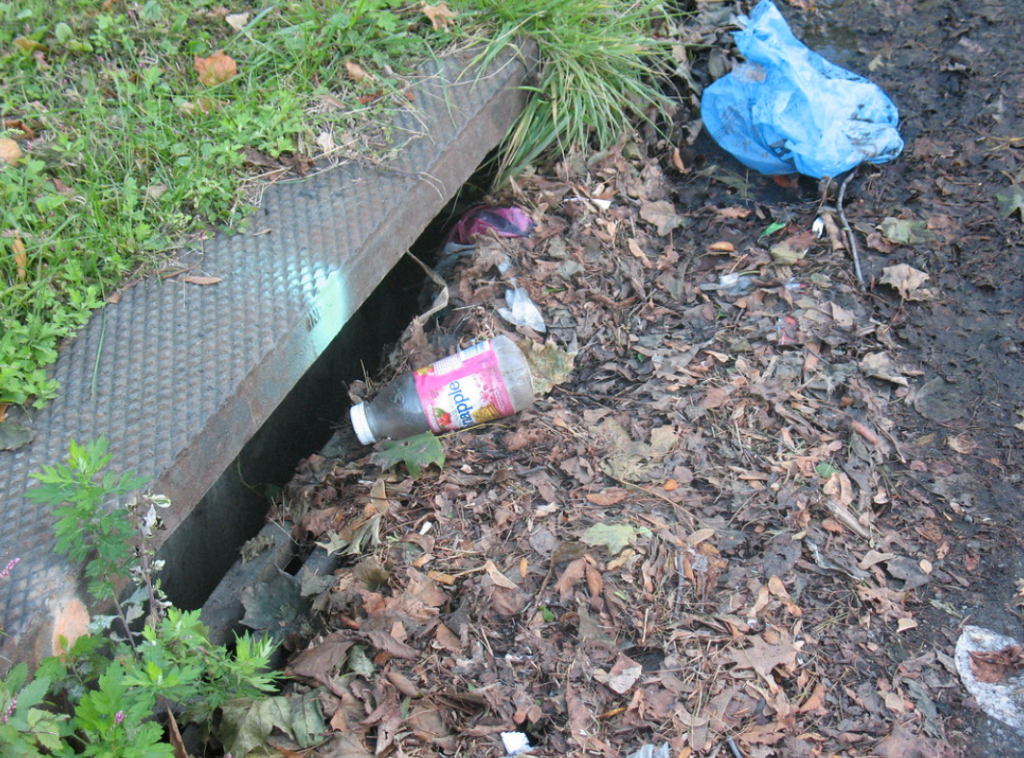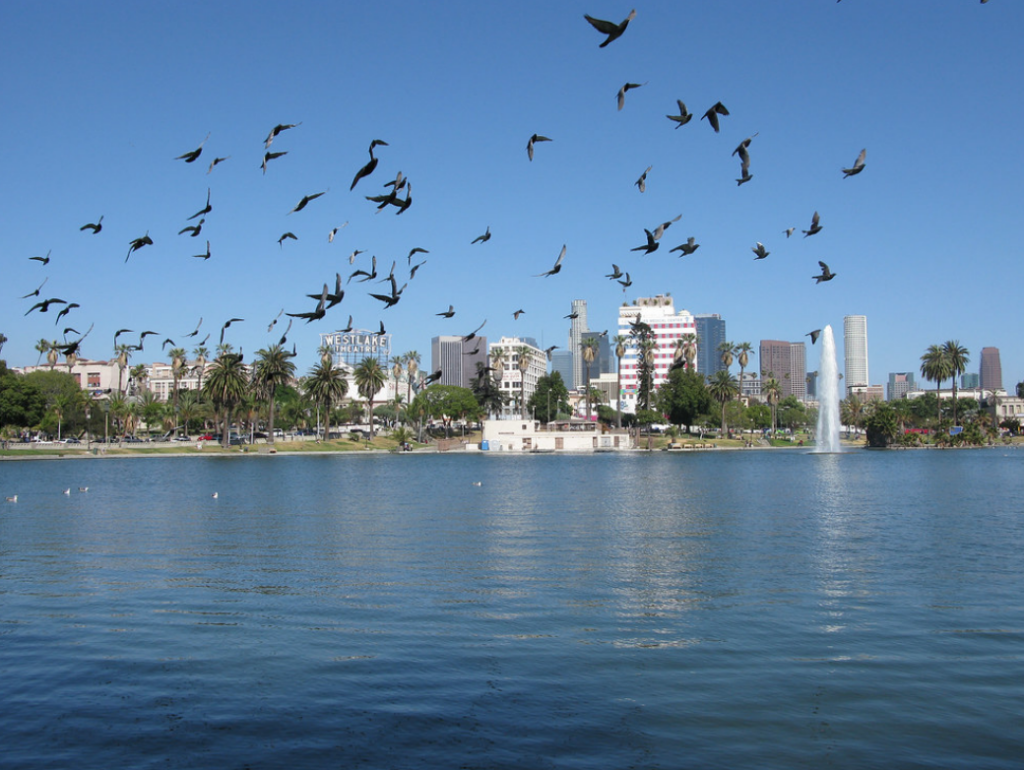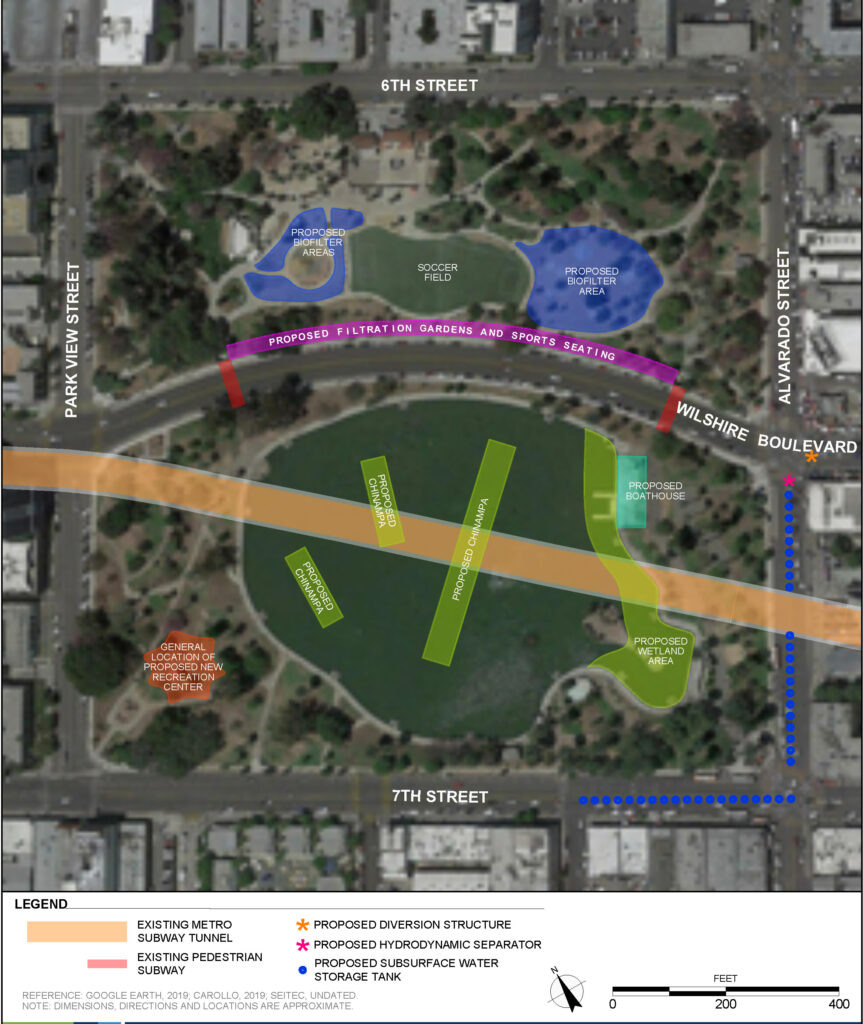A typical day in Southern California includes warm weather, traffic, and maybe even a trip to the beach. Los Angeles, the region’s largest city, averages about 35 days of rain per year, which ranks among the lowest for major cities in the US. So, when it does rain, it can feel like a bit of a relief for residents as well as the ecosystem. But alongside each storm comes significant concerns about pollutant runoff from the urban environment.
In cities like Los Angeles, which are paved with cement and other non-porous material, surface pollutants can collect over time without proper disposal. When it rains, these pollutants are carried by the water through storm sewer systems and are eventually deposited into local bodies of water. These types of surface pollutants originate from human activity and include things like waste plastic, motor oil, pesticides, and even heavy metals. Rainfall in many cities flows into the sewer system and is treated, but many California cities have separate stormwater drainage systems and, as a result, bodies of water like rivers and oceans can quickly become polluted during rainfalls, which then negatively impact drinking water, recreational activities, and local ecosystems.

The practice of addressing these concerns is called stormwater management, and it focuses on reducing runoff and improving water quality through a variety of green infrastructure techniques, such as rain barrels and cisterns, permeable pavements, curb and gutter elimination, and constructed wetlands.[1] If done properly, effective stormwater management can not only reduce pollutants into local bodies of water, but it can also help recharge groundwater supply for a region.
In California, the National Pollutant Discharge Elimination System (NPDES) regulates storm water discharge through permits. The NPDES was implemented at a federal level in 1972 but was delegated to California for implementation through its State Water Resources Control Board (State Water Board) and the nine Regional Water Quality Control Boards (Regional Water Boards).[2] At a more local level, such as in Los Angeles, municipal stormwater permits are provided through the Los Angeles Water Board via the Los Angeles County, Long Beach, and Ventura County permitting system. [3]
In order to comply with federal water quality standards under the NPDES, municipalities need to raise funds to implement stormwater management practices. This is often done through state or local measures that are placed on a ballot for a vote. In 2018, Los Angeles County voters passed Measure W, now known as the Safe Clean Water Program, which established a parcel tax that would fund stormwater management activities throughout the region to improve local water supply and quality, as well as public health. The goals of the program touch on a variety of intersectional issues, and most importantly focus on local community input and oversight.
In order to ensure that the funds raised by the Safe and Clean Water Program were distributed equitably across the region, nine steering committees were established with local community representatives to analyze each proposed project. In October of 2020, the first set of projects were approved, totaling over $95 million in new investments across 41 infrastructure projects, 15 technical assistance projects, and four scientific studies.[4]

Los Angeles Sanitation and Environment (LASAN) proposed four multi-benefit stormwater capture projects and received approval for each. Among them is the MacArthur Lake Rehabilitation Project, which is described as a:
“$20M project to rehabilitate the lake at MacArthur Park by capturing, storing and treating stormwater for beneficial use, enabling the collected and treated stormwater to offset potable water use for lake fill and irrigation, while also providing for downstream water quality benefits in the Ballona Creek watershed. The project incorporates nature-based solutions that will enhance the park and foster significant community benefits. Proposed nature-based technologies include biofiltration, bioswales, lake habitat restoration, and the incorporation of wetlands enhancements.”[5]

As Los Angeles continues to develop projects under Measure W, other municipalities will look to do the same, both across the state as well as the country. Therefore, in an effort to help other municipalities find inspiration from already implemented projects and learn shared lessons along the way, 7GA created the Multi-Benefit Stormwater Management Practices Database.
In the Database, 7GA compiled cost-effective stormwater management project examples that improve water quality, reduce local pollution, and increase local water supplies. Many of these stormwater management projects have multi-purposes, not just to deter pollution to watersheds, but to enhance the surrounding community.
The Database also lists funding and financing methods for these projects, which is even more critical today as many communities face budget shortfalls in the wake of Covid 19 business closures. President Biden’s infrastructure plan includes funding for water and stormwater improvement projects, so now is the time for cities to take action that can alleviate droughts and protect our precious water resources.[6]
To learn more about our efforts, or to view a copy of the database, please click here.
[1] https://www.epa.gov/greeningepa/stormwater-management-practices-epa-facilities
[2] https://www.waterboards.ca.gov/water_issues/programs/npdes/
[3] https://www.waterboards.ca.gov/losangeles/water_issues/programs/stormwater/municipal/
[4] https://ourwaterla.org/la-county-approves-first-year-of-safe-clean-water-program-projects/
[5] https://www.wateronline.com/doc/la-sanitation-environment-secures-funding-four-safe-clean-water-measure-w-regional-water-quality-projects-0001
[6] https://www.whitehouse.gov/briefing-room/statements-releases/2021/03/31/fact-sheet-the-american-jobs-plan/